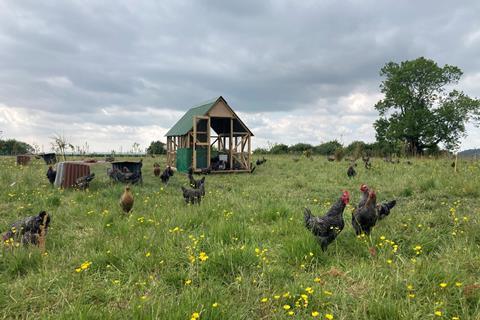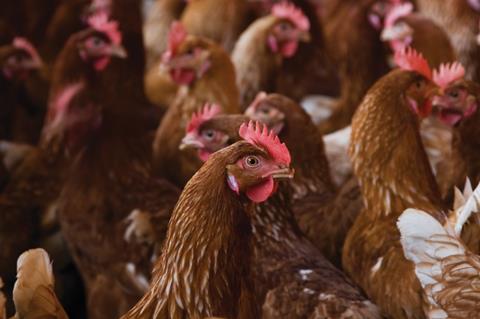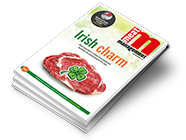Innovative Farmers, a network of farmers across England, are trialling a selection of heritage chicken breeds with the aim to cut emissions, end the culling of male chicks and “build economic resilience”.

Mike Mallet, a mixed arable farmer and egg producer from Suffolk, has come together with five other farmers to team up with Innovative Farmers. The farmers will test resilient “dual-purpose” chicken breeds, suitable for both meat and egg production.
Mallet stated: “After the Ukraine war began and organic feed prices soared, we started looking for a way to step off the treadmill. Instead of relying on high-protein imported feed, we wanted to explore whether lower-stress birds could thrive on homegrown protein sources.”
Sustainable solutions for poultry
Dr Annie Rayner, from Planton Farm, Shropshire, is the researcher who is supporting the trial. She said that this approach could help “tackle the heavy carbon footprint” of conventional poultry feed.
It could also address the “ethically controversial” issue of male chick culling, she said. This practice is already restricted in some European countries and could face regulations in the UK within the next five to 10 years.
She said: “Dual-purpose breeds may require less protein, which could mean greater reliance on homegrown feed rather than imported soy. We need to address waste across the food system. By making use of male chicks and reducing imports, this approach could have real benefits.”
Mallet continued: “A huge number of small producers have left the sector. If this model works, it could offer an alternative and help stem the decline.”
Dr Rayner highlighted that the potentially lower-protein requirements of dual-purpose breeds could help farmers build resilience in the face of climate change.
Feeding homegrown protein reduces dependence on long supply chains, she said, and the “robust nature” of the breeds could make them more adaptable to changing weather conditions than their specialised counterparts.
Increased welfare for chickens
Innovative Farmers highlighted that dual-purpose birds are thought to be naturally better suited to a low input pasture-based system than modern hybrid breeds, which means there are also “benefits to their health and welfare”.
Mallet stated: “The theory is they’re much more resilient. That doesn’t mean they’re immune to issues like avian flu, but they should be less prone to some common health problems.”
Dr Rayner added that selecting for productivity in both eggs and meat, rather than extreme specialisation, could make a “real difference”. Because these birds are bred for both functions, they’re under less pressure to grow at unnatural speeds or produce excessive eggs, said Innovative Farmers, which could mean fewer welfare issues overall.
Dual-purpose breeds are reportedly uncommon in the UK, but are typical in parts of Africa and Asia. Innovative Farmers said that the breeds were “making a comeback” in European countries where regulations have restricted the culling of male chicks.

The trial will assess how well they perform in British farming conditions and whether the meat products from this system are likely to be accepted by consumers. Anecdotal feedback on the taste and quality of meat will also therefore be assessed.
The trial is being run as a field lab through Innovative Farmers, allowing farmers to test ideas in real-world conditions.
Mallet added: “Running this as a field lab means we can see how it works across different farms, rather than just in theory.”
Innovative Farmers trial coordinator Sam Packer said: “This trial will show practical examples of dual-purpose poultry in action. Our results could help bring confidence to other producers looking to move to small-scale poultry or existing producers tackle sustainability or welfare challenges they face.
“The community of practice we are building as part of this trial is as important as the results themselves. By coming together, testing and learning we can begin to build an alternative to the challenges of the current system.”















